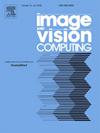A decision support system for acute lymphoblastic leukemia detection based on explainable artificial intelligence
IF 4.2
3区 计算机科学
Q2 COMPUTER SCIENCE, ARTIFICIAL INTELLIGENCE
引用次数: 0
Abstract
The detection of acute lymphoblastic leukemia (ALL) via deep learning (DL) has received great interest because of its high accuracy in detecting lymphoblasts without the need for handcrafted feature extraction. However, current DL models, such as convolutional neural networks and vision Transformers, are extremely complex, making them black boxes that perform classification in an obscure way. To compensate for this and increase the explainability of the decisions made by such methods, in this paper, we propose an innovative decision support system for ALL detection that is based on DL and explainable artificial intelligence (XAI). Our approach first introduces causality into the decision with a metric learning approach, enabling a decision to be made by analyzing the most similar images in the database. Second, our method integrates XAI techniques to allow even non-trained personnel to obtain an informed decision by analyzing which regions of the images are most similar and how the samples are organized in the latent space. The results on publicly available ALL databases confirm the validity of our approach in opening the black box while achieving similar or superior accuracy to that of existing approaches.
基于可解释人工智能的急性淋巴细胞白血病检测决策支持系统
通过深度学习(DL)检测急性淋巴细胞白血病(ALL)受到了极大的关注,因为它无需人工特征提取就能高精度地检测出淋巴细胞。然而,目前的深度学习模型(如卷积神经网络和视觉变形器)极其复杂,使其成为以模糊方式进行分类的黑盒子。为了弥补这一缺陷并提高此类方法所做决策的可解释性,我们在本文中提出了一种基于 DL 和可解释人工智能(XAI)的创新型 ALL 检测决策支持系统。我们的方法首先通过度量学习方法将因果关系引入决策,通过分析数据库中最相似的图像来做出决策。其次,我们的方法整合了 XAI 技术,通过分析图像中最相似的区域以及样本在潜在空间中的组织方式,即使是未经培训的人员也能做出明智的决策。在公开可用的 ALL 数据库上取得的结果证实了我们的方法在打开黑箱方面的有效性,同时达到了与现有方法相似或更高的准确性。
本文章由计算机程序翻译,如有差异,请以英文原文为准。
求助全文
约1分钟内获得全文
求助全文
来源期刊

Image and Vision Computing
工程技术-工程:电子与电气
CiteScore
8.50
自引率
8.50%
发文量
143
审稿时长
7.8 months
期刊介绍:
Image and Vision Computing has as a primary aim the provision of an effective medium of interchange for the results of high quality theoretical and applied research fundamental to all aspects of image interpretation and computer vision. The journal publishes work that proposes new image interpretation and computer vision methodology or addresses the application of such methods to real world scenes. It seeks to strengthen a deeper understanding in the discipline by encouraging the quantitative comparison and performance evaluation of the proposed methodology. The coverage includes: image interpretation, scene modelling, object recognition and tracking, shape analysis, monitoring and surveillance, active vision and robotic systems, SLAM, biologically-inspired computer vision, motion analysis, stereo vision, document image understanding, character and handwritten text recognition, face and gesture recognition, biometrics, vision-based human-computer interaction, human activity and behavior understanding, data fusion from multiple sensor inputs, image databases.
 求助内容:
求助内容: 应助结果提醒方式:
应助结果提醒方式:


